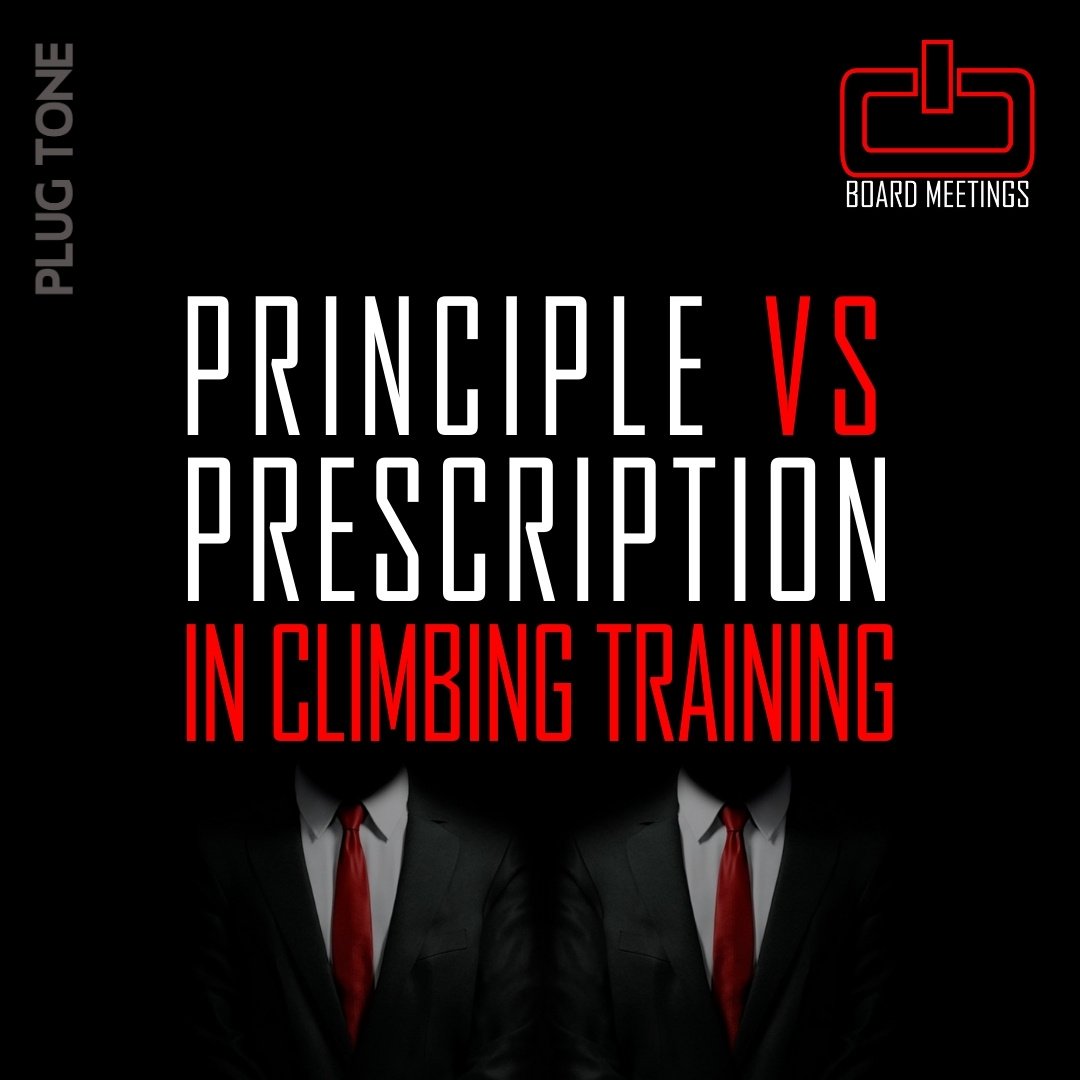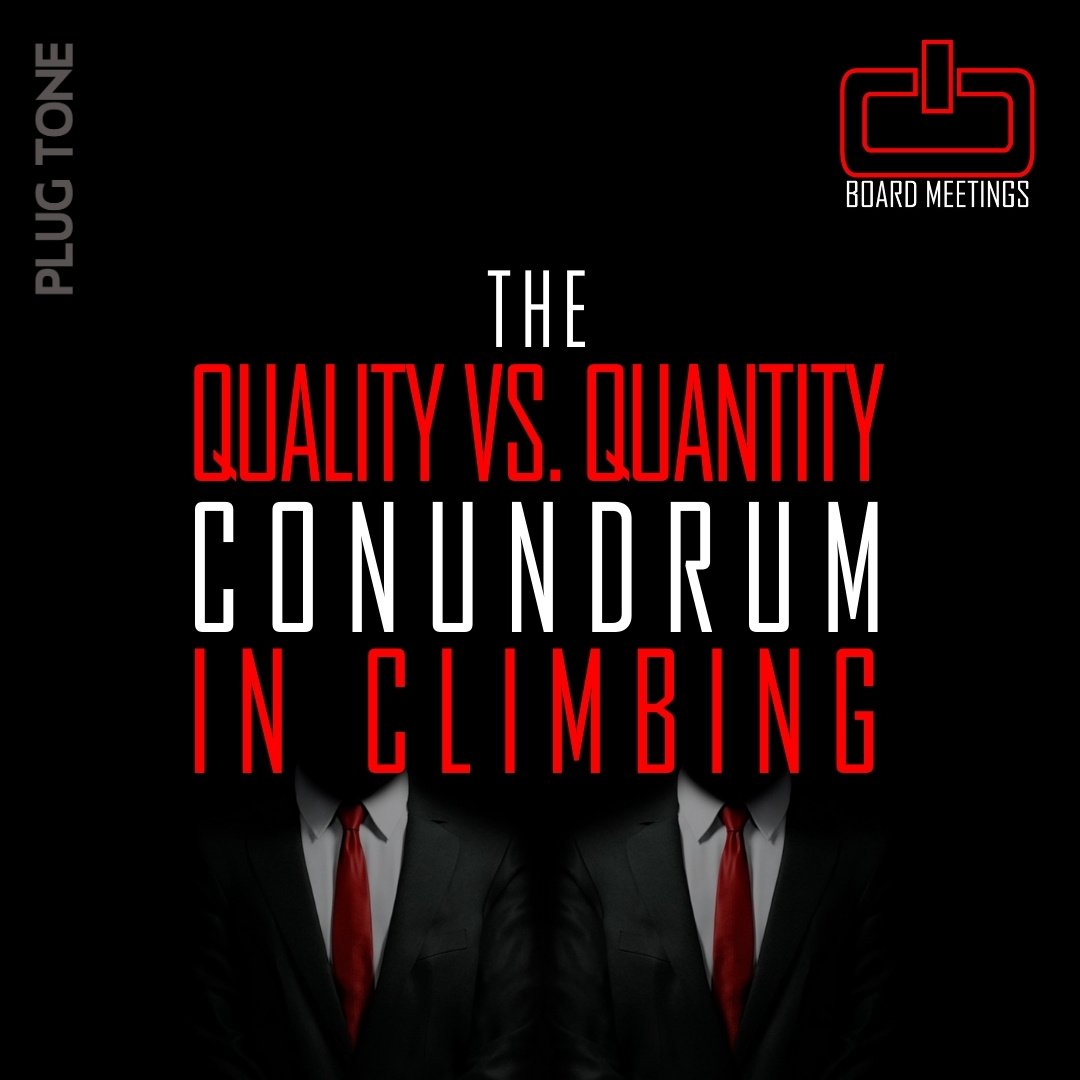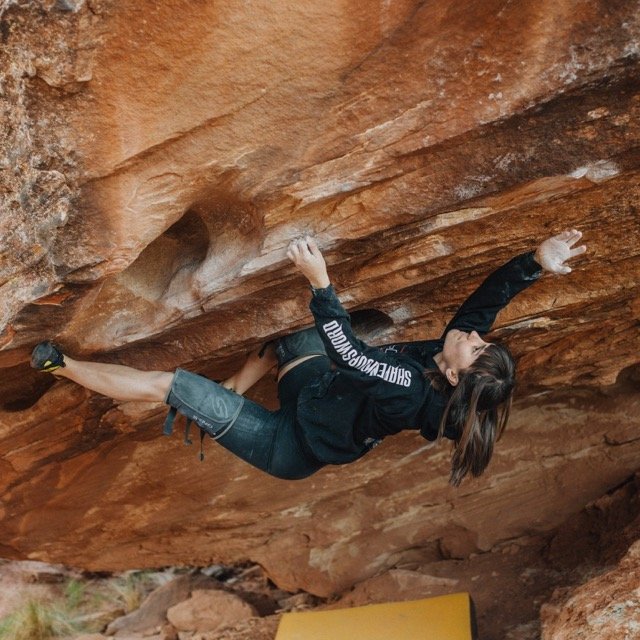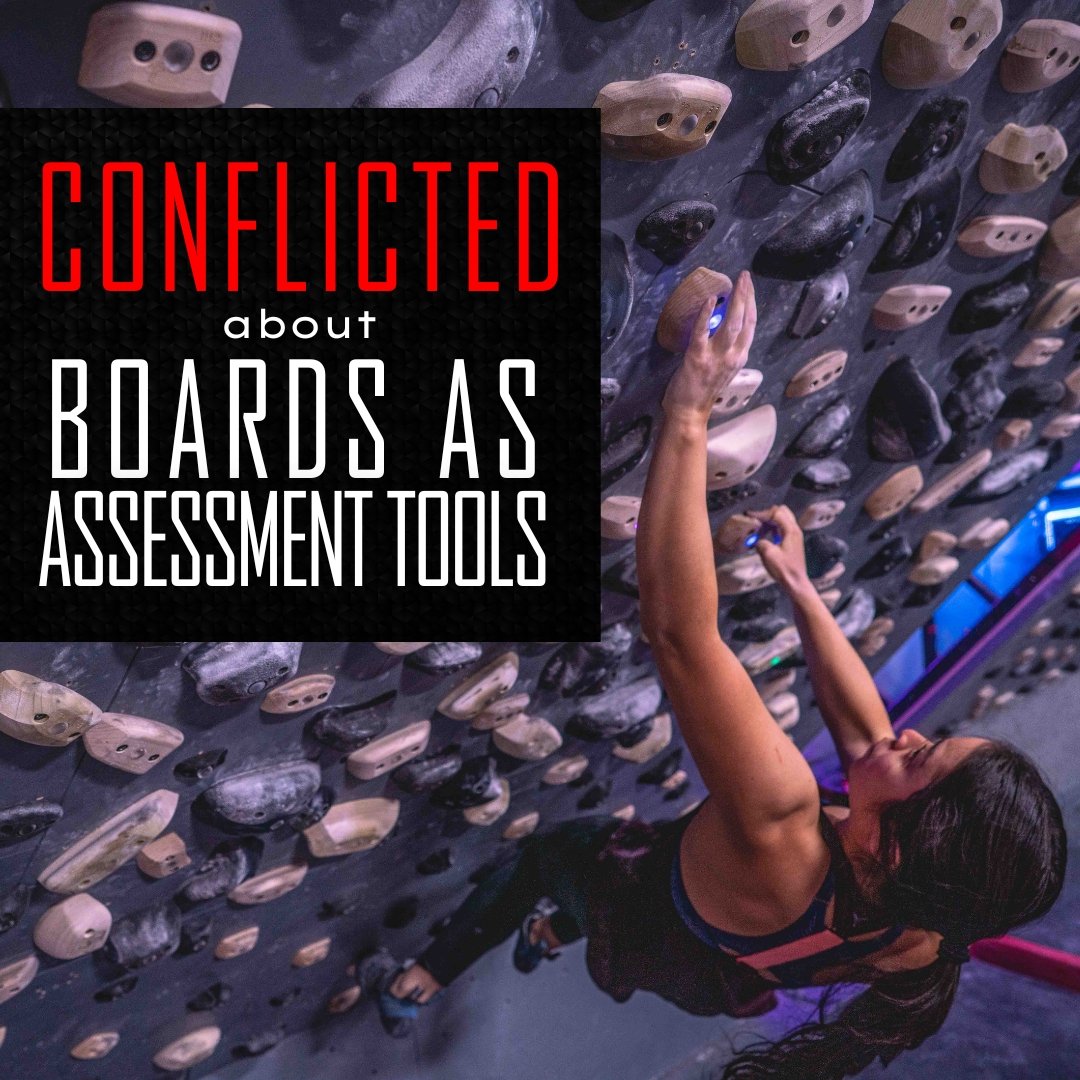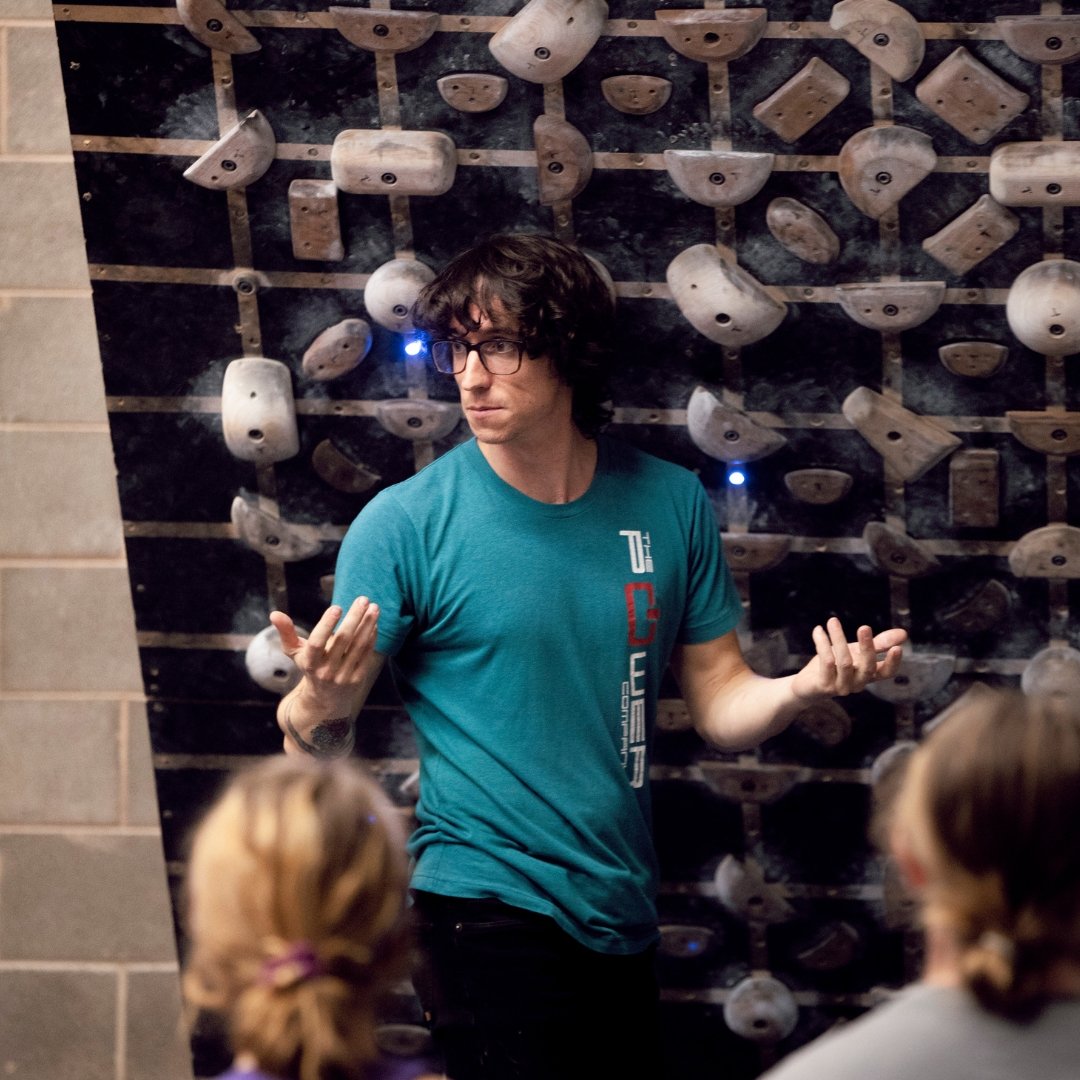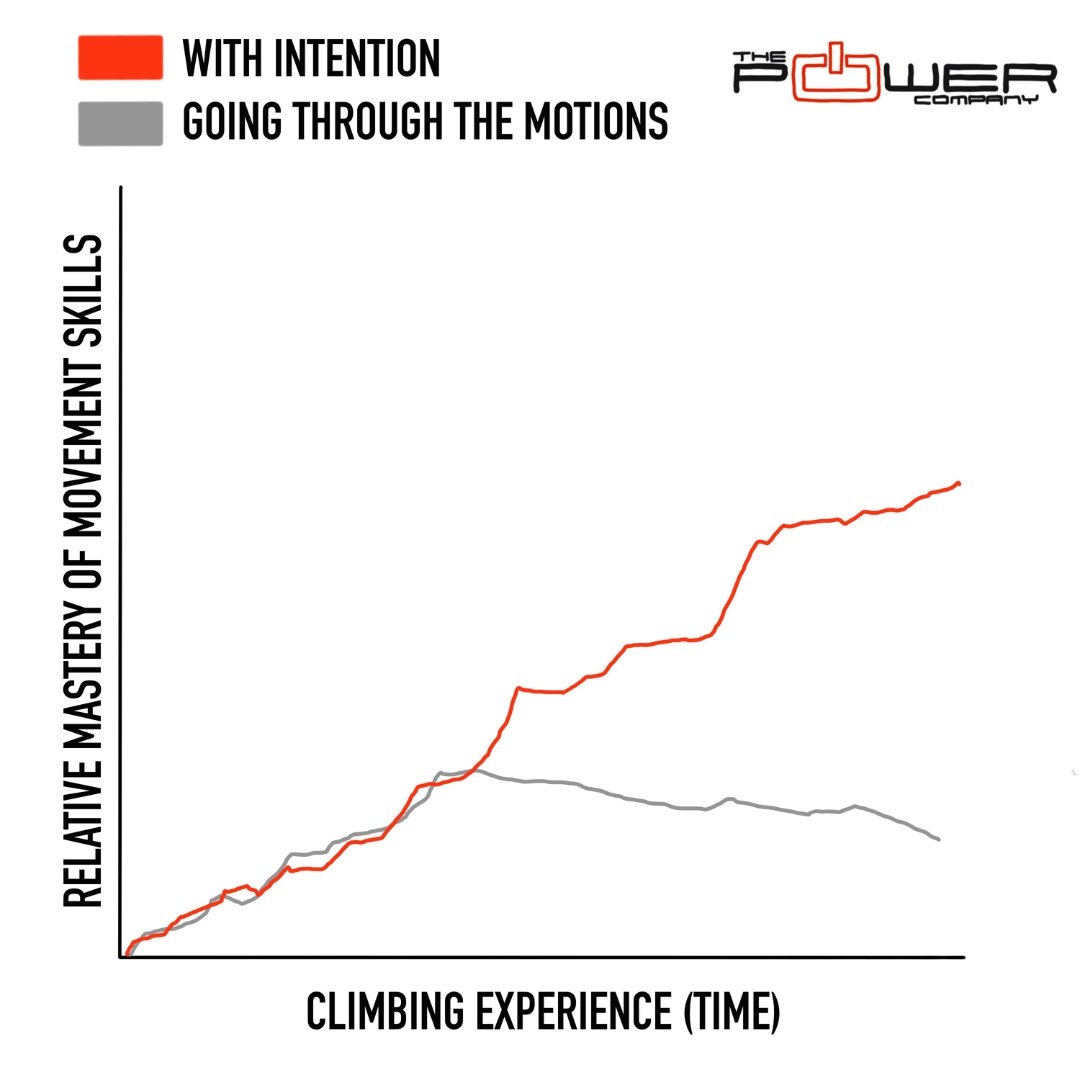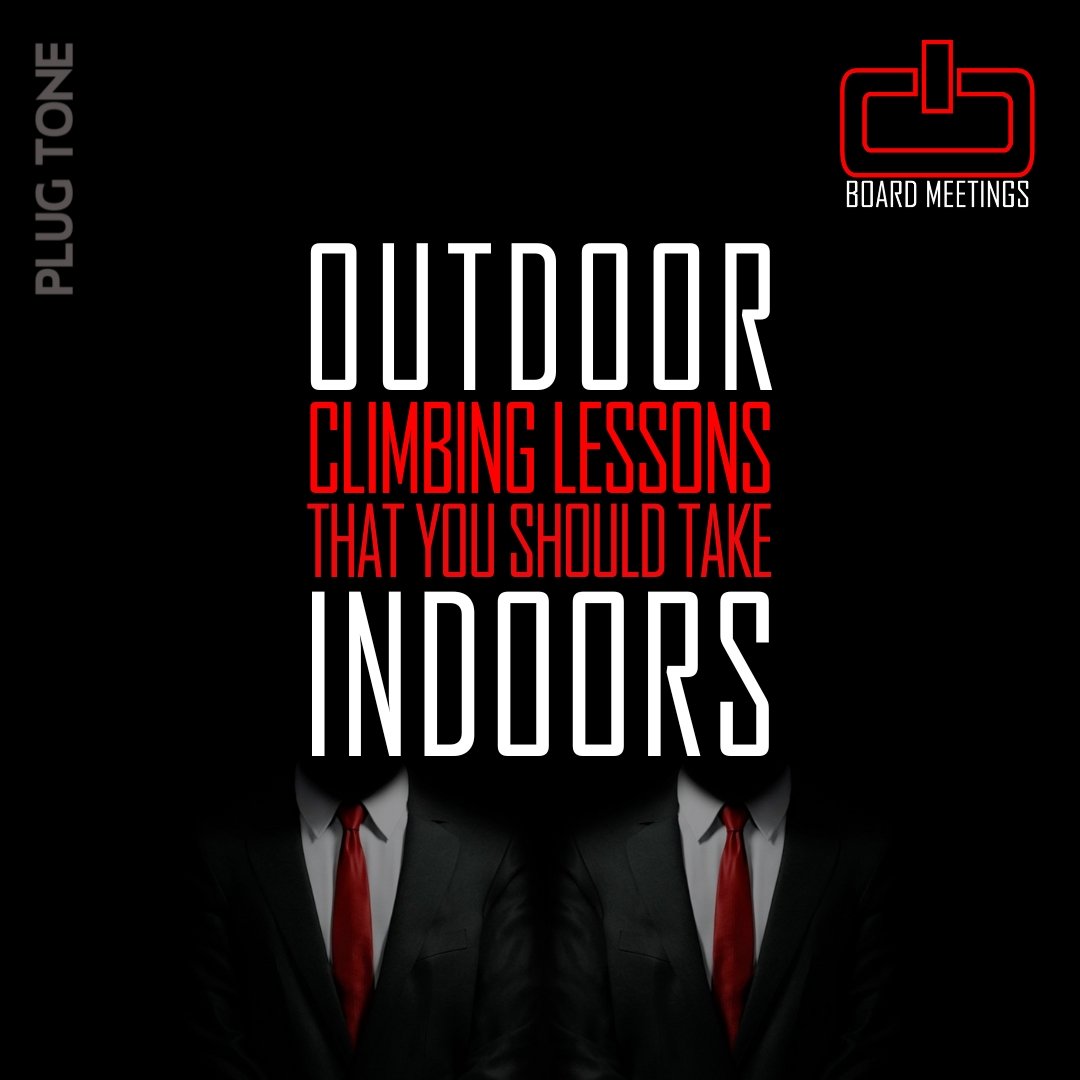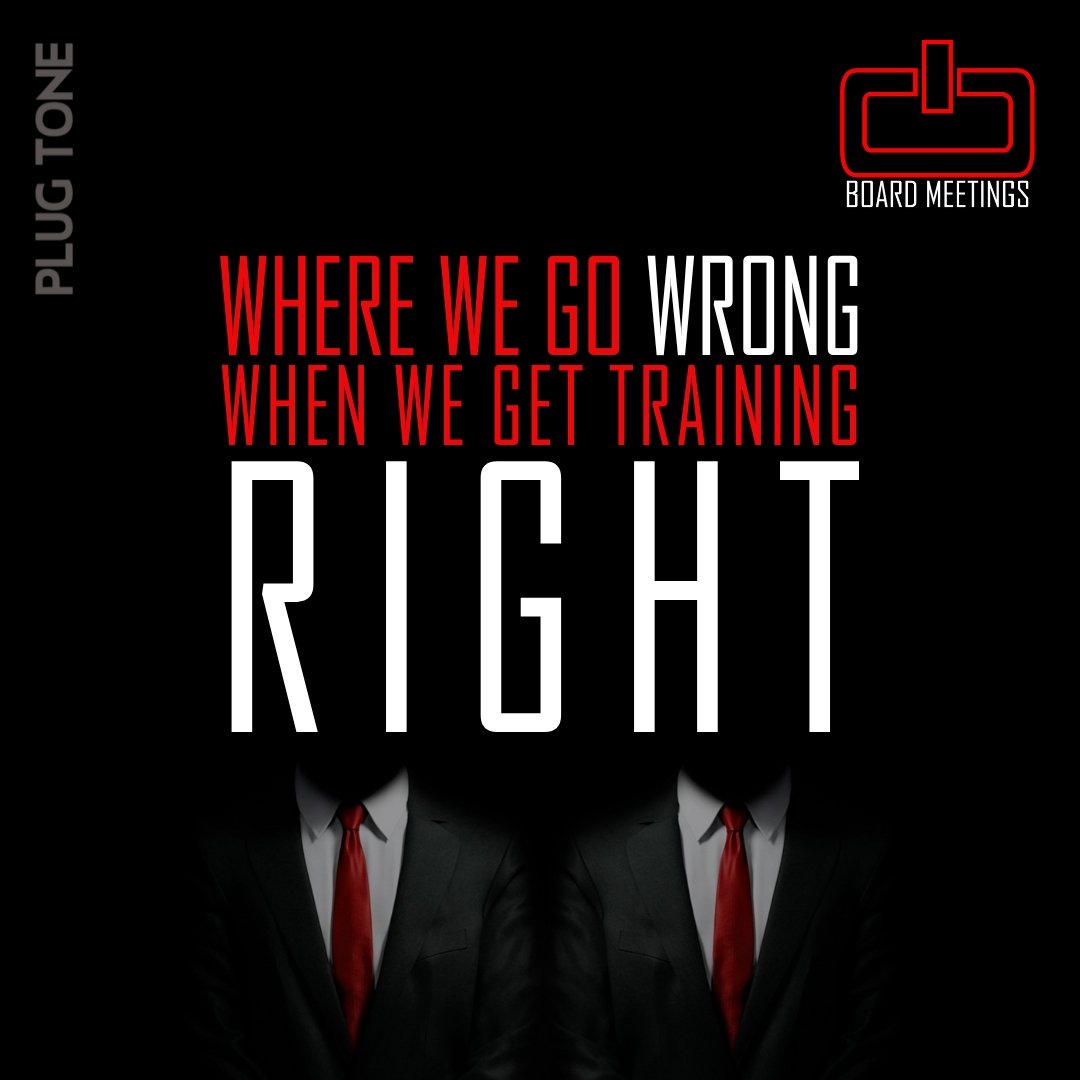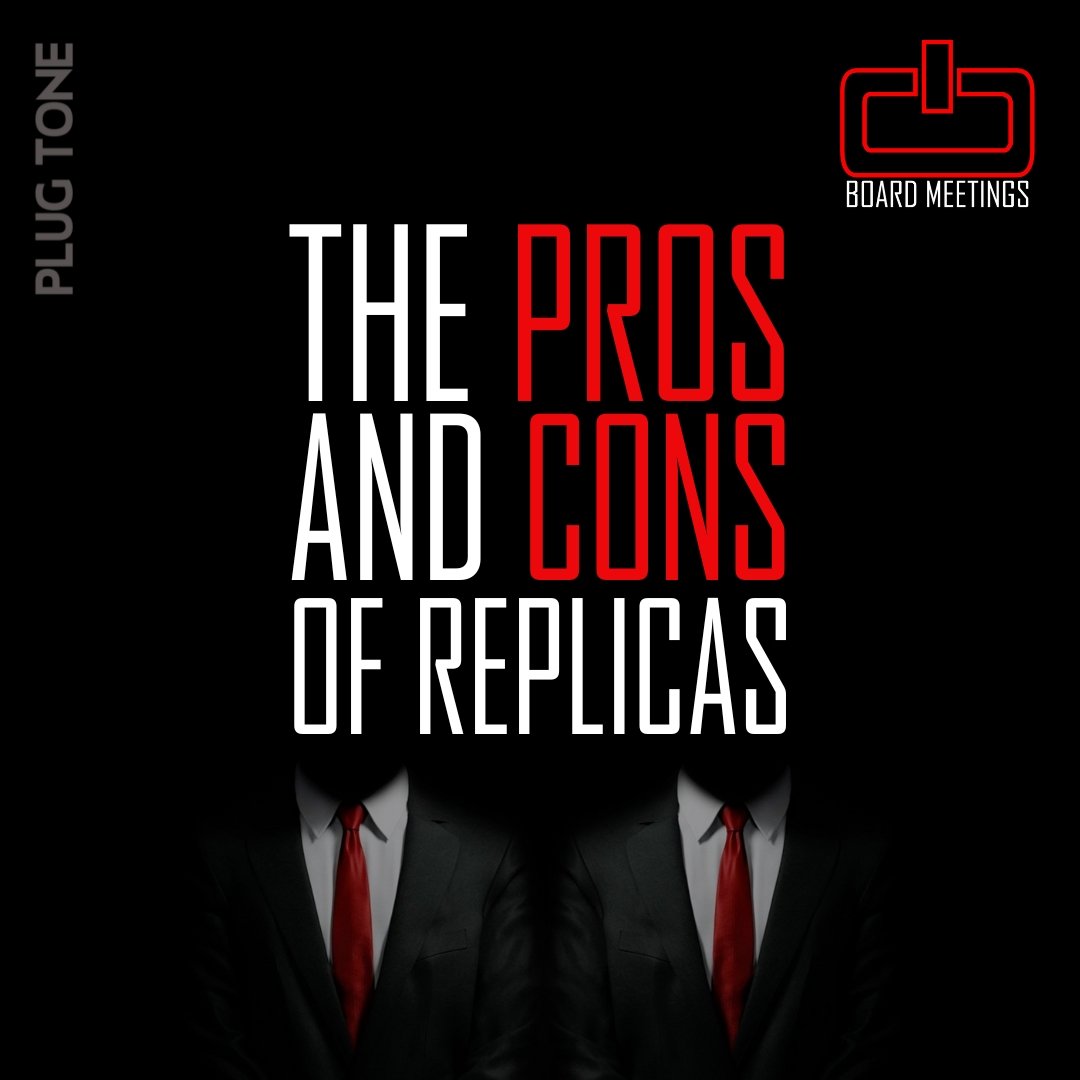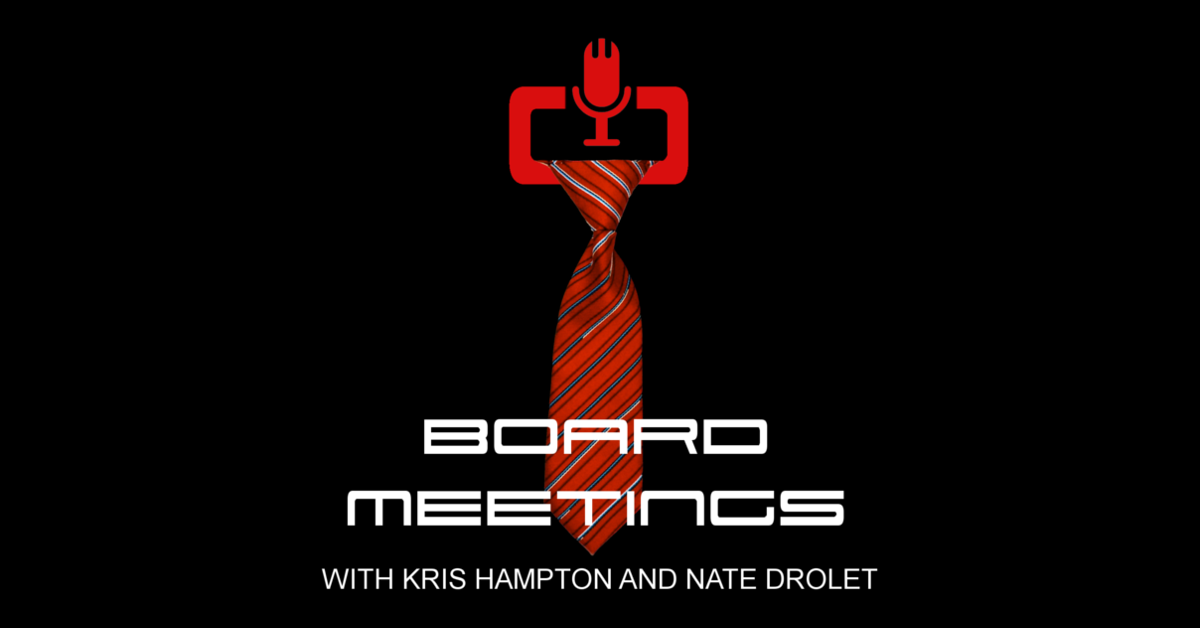Episode 79: Board Meetings | When To Say Take
There are appropriate times to say "Take". There are also instances when saying it is only slowing your progress. In this episode, Nate and I sit down in Bozeman, Montana during our work at Spire Climbing Center to discuss a topic that many people don't realize that they don't fully understand.
Don't forget to share the podcast with your friends, your enemies, and strangers on the street. They'll thank you, and so will we.
We don't tweet. We scream like eagles.
FULL EPISODE TRANSCRIPT:
Kris Hampton 00:31
What's up everybody? I'm your host, Kris Hampton.
Nate Drolet 00:34
And this is Nathan Drolet.
Kris Hampton 00:36
And together we formed Zoltar because we control your fortunes. Do you know who Zoltar is? Are you familiar with this reference?
Nate Drolet 00:47
Was that from the movie Big?
Kris Hampton 00:48
That was!
Nate Drolet 00:49
Oh man
Kris Hampton 00:50
Ding ding ding
Nate Drolet 00:51
Got it.
Kris Hampton 00:52
Yeah, I think I'm gonna use dated references on all of our Board Meetings from now on because you once chided me for my dated references.
Nate Drolet 01:02
Oh, well, it's okay because now that Ready Player One is a popular book and it's gonna become a movie, like that's actually going to be popular now.
Kris Hampton 01:08
Oh, shit. We're on top of things here.
Nate Drolet 01:10
Yeah it's okay, you're finally going to be popular again.
Kris Hampton 01:14
Awesome. I love it. So we're here in beautiful Bozeman, Montana. We're actually sitting in the house where we're staying now of our of my good friends, Becca Skinner and Eduardo Garcia. And we're looking out at the Gallatin Gateway, Gallatin Canyon. It's fucking beautiful here. And we're having an amazing time at Spire Climbing Center. So thanks to all you folks in Bozeman and Spire for having us out. Really cool community here. If you get the chance, you should definitely come through Spire and just get to meet the people here in Bozeman. I think it's pretty cool.
Nate Drolet 01:54
Yeah, absolutely.
Kris Hampton 01:55
Not all gyms have this, you know, really close knit community. So I'm stoked to be here. And what are we going to talk about today? We're talking about when to say take? Is it ever appropriate? Like, should you just go amuerte every fucking go? Or should you say take some times? And I think, I think this is kind of a popular topic, because just recently on Training Beta, you know, Neely talked to Paige Claasson while she was working on Odin's Eye. And Paige made the the comment that you should never say take, and then she qualified it, you know, and, and I think her qualification for it was was very legitimate, and I think was a good explanation. But I think a lot of people just hear the absolute "Never say take", and then they, you know, they want to make t shirts with that. And that's now life, you know, "Never say take" is life. And, and I don't think that's quite true. I think there are some times when you should and I think there are a few, you know, really valid times that you shouldn't.
Nate Drolet 03:02
Yeah I'd agree. Before we get started, I've got a question for you.
Kris Hampton 03:08
Okay.
Nate Drolet 03:08
What do you consider taking? Like, how would you define it? Like what fits under that umbrella, to you?
Kris Hampton 03:17
Um, anytime that you are purposely just going to sit on the rope. I don't think if you're in a situation where you're eight feet above a bolt, and you're going to fall and you say take because you can't, because you just can't make another move, like you're physically incapable of leaving the holds that you're on, I don't necessarily count that as a take. You know,
Nate Drolet 03:54
There's a lot of gray area in there.
Kris Hampton 03:55
There is. There's a lot of gray area. I agree there's a lot of gray area that's gonna happen in this conversation, I'm sure. But yeah, I think a take is anytime you purposely sit on the rope, while you're climbing on a sport route, trad route, whatever.
Nate Drolet 04:13
Alright,
Kris Hampton 04:13
Your thoughts? How do you define it?
Nate Drolet 04:15
Fairly similar, pretty much
Kris Hampton 04:17
You caught me off guard there, so I'm curious
Nate Drolet 04:18
I know that was the plan
Kris Hampton 04:19
It was a trick question?
Nate Drolet 04:20
No, not at all. Just Um, so to me, the definition of taking is anytime that, it's very similar to what you said, but pretty much anytime you're not moving upward like you're willingly stopping. So for instance, if you're climbing up, and you get to the crux, and you're like, I'm a little too pumped. I don't think I'll make it and you just let go, that's taking in my mind.
Kris Hampton 04:41
Yep, totally
Nate Drolet 04:42
Equivalent. You didn't say the word take, but to me, that is the exact same thing.
Kris Hampton 04:47
Same semantics as when people are like, you know, I did it with no falls, but they took four times
Nate Drolet 04:52
Yes.
Kris Hampton 04:53
It's like then those are still four falls.
Nate Drolet 04:55
Yeah. Though what's funny is I actually to kind of go against that entirely, I was climbing with a buddy last year in Smith, last October. When I say a buddy, I had only known him for a few days at this time. So it's kind of funny that we ended up becoming friends because I kind of razzed him sort of hard. So he's a shorter guy and he was trying a route called, oh, what is it call? It's in the Aggro Gully, Mama Daucus. Really big moves, precise moves to slots. And if it's short, it's if you're short, it's really difficult. And he hadn't tried it in a while. He's like, I'll go up, like, it's probably gonna take me the whole season to do, like it's really hard. And this guy is just a bone crusher. And I was like, Okay, cool. And he goes up, bolt to bolts up it, doesn't fall. I was like, sick, like that's gonna come together fast. He was like, I don't know. I mean, the moves are still really hard. Goes up, climbs it through all the bottom bit, all these hard moves and gets up to this deadpoint. And he like, looks down. He's like, I'm off. And just like, let's go. He was like, I don't know, I was just, I wasn't sure how I felt. Pulls on and just does this huge overlap. Crushes it. And so when he comes down, like at the end of the day, I was like, Man, that was nice, you had a no-fall day today. And he looks at me. And he's like, What do you mean? I was like, will you like didn't fall, you just let go today. And which is like, I was intentionally saying this, because I knew like if he pulled on and he just like, went for it from the ground, he would do the route.
Kris Hampton 06:24
Right. Right. Right.
Nate Drolet 06:24
And but in his mind, it had to be this long, drawn out process. He's like, no, it's gonna take days. And so surprisingly, he wanted to go rock climbing with me again. So the next time we went out, like before he pulled off the ground, I was like, cool, you're gonna go for it when you get there. He's like, yeah. And he ended up sending it that day. And he was just like, it's like, Ah, that's crazy, like, I didn't expect that at all, you know? Because I got to be the outside have the outside perspective of watching him. It's just like, Man, you just have to have confidence and go for it.
Kris Hampton 06:50
Yep. But for sure. He was essentially saying take.
Nate Drolet 06:53
Yes, exactly. It was the exact same thing as saying take in my mind. So for me, that's what taking is, like anytime that you're letting go without upward upward momentum.
Kris Hampton 07:06
Okay. Should you ever say take over?
Nate Drolet 07:09
Yeah.
Kris Hampton 07:10
Yeah, I think so, too.
Nate Drolet 07:11
Yeah, there's a reason we have that word. It's important.
Kris Hampton 07:14
Yeah, definitely. Um, are there specific times like, like, can you break it down into any, like, specific situations or like bigger, broader situations where these are the times you should say, take? So instead of just mentioning, like, the 500 specific moments on a route, when you could say take, are there like, bigger, basic times? Like, obviously, if there's danger.
Nate Drolet 07:43
Yep. Danger, whether or
Kris Hampton 07:45
Danger or
Nate Drolet 07:47
Potential injury, if you start to feel something tweak, like, you grab a pocket and you start feeling pain down your forearm, I personally just let go, but you know, if you could say take at the same time, then yeah,
Kris Hampton 07:57
Yeah. And and that doesn't necessarily mean that just because you're scared, you should say take. Though, I do think sometimes you should. And we'll get into that later. But if there's danger, and you can say take and alleviate that danger, then sure, I mean, I think it's a valid thing to do it then. Any other like broad basic times?
Nate Drolet 08:20
Yeah, I think, you know, I think regardless of what you do, whether you do or don't take, you should make a plan with your belayer on the ground.
Kris Hampton 08:27
Absolutely.
Kris Hampton 08:28
Yeah. Set an intention before you leave the ground.
Nate Drolet 08:30
Yes. So for instance, if you are doing your second warm up, you're like, I'm going to go up and I'm going to bolt the bolt up my project, or I'm going to go to the fifth bolt, I'll rest, go from the fifth bolt to the top. And you know, your belayer should hold you accountable. And so if you get the fifth bolt, you're like, you know what, I feel really good. I'm gonna keep going. Your belayer should be like, no, because you're gonna get flash pumped and ruin the rest of your day. And then so yeah, that's a great time to take, you know, tactically.
Kris Hampton 08:57
Yeah
Nate Drolet 08:57
And the same thing like,
Kris Hampton 08:58
Man, I think you should hold yourself to that. I think that if your plan before you leave the ground is I'm gonna say take every other bolt and you get up there and you feel really good. And you're like, fuck, fuck taking, I'm just gonna go for it. And you don't take and then you fall it bolt seven. Then you might have just blown your warmup.
Nate Drolet 09:22
Yeah, you'd be flash pumped
Kris Hampton 09:22
You might have just gotten flash pumped. You didn't send. You don't have anything to show for it except for you didn't follow through with your plan and now your day is fucked. Yeah, so I'm cursing a lot today.
Nate Drolet 09:35
Haha yeah it's because I'm here. So to me, like tactics, like there are times where it's great to take and say hey, like, I mean, yeah, if you have no skin in the game, if it's if you're like, Okay, my plan is to go up and work out the redpoint crux or just the crux of the route and you get to the second bolt and you're like this is only like, you know, these are easy moves for me, but I feel like I just do them poorly. Yeah, man. Take. Work it out. Like I think a lot of people really ignore easy climbing on it and so they're climbing sections that they're like, oh, it's like a 12a intro. It's like, well, if you're doing it right, maybe it's only like an 11a intro, but you just haven't taken the time.
Kris Hampton 10:13
Yeah
Nate Drolet 10:13
So yeah, I think tactically, take is a great method and should be used well, but whatever you do, make the plan with your belayer. And yeah, have have them hold you accountable to it and don't be an asshole to them when they do.
Kris Hampton 10:26
Yeah, totally.
Nate Drolet 10:27
Like, good example is, man
Kris Hampton 10:29
I will pull you off the wall.
Nate Drolet 10:32
Or the opposite. If you're like, Hey, I'm gonna go up and I'm gonna go for it. If I say take, like, either ask me if I'm sure or just, yeah, ask me if I'm sure. Yeah, you know, and sometimes people are like, they go leave with such great intentions. They're like, I'm charging up there and they get up and they're like, pumped, and they're a little frantic and they are like, okay, you can take and the belayer is like, are you sure? They're like, yes I'm fucking sure! They just scream at their belayer. And it's like, Hey, dude, like, yeah, we made this plan together. Like you, you know.
Kris Hampton 10:58
Yeah. And that should be a consistent thing. Like, you know, Arno Ilgner brought this up in my first conversation with him on the podcast that the climber letting the belayer know how they want to be coached is really important.
Nate Drolet 11:10
Totally.
Kris Hampton 11:10
And that's a big part of it.
Nate Drolet 11:11
Yeah, I mean, it's, a belayer should be there more than just to hold the rope. Like, you have to have like trust in them. They should know what you're doing. Like, all these different things. If you, you know, like, to me if I'm skipping bolts, or if I'm doing anything that I would want to know, as a belayer, I tell my belayer like, before we even get started. I'm like, hey, like, it's really weird going to the third bolt, like, I haven't fallen, but I could, you know, things like that, like, you should have this open dialog.
Kris Hampton 11:36
Yep. Yep. So tactically, and I think that's the, I think this is the biggest, like, reason to say take is, is tactics. And and I think we should dive into this a little bit. Because, you know, this, this tactical approach to saying take can take a lot of forms. And we were just talking about warm ups. So let's go into that a little bit. Why would you say take on your warm ups? I mean, aren't you supposed to send every warm up? If you don't send them warm up you just suck.
Nate Drolet 12:05
I mean, really, the only time I ever say take like, during my day is when I'm at the anchors, and I'm like, okay, you can just lower. Sometimes I take a victory whip but I'm not really into it. But mostly just okay, take. I sent. Cleaning. Yeah, on your warmup man, if, yeah, if you're getting overwhelmingly pumped, or if like,
Kris Hampton 12:27
Not every day, not every day is the same. Like you're not gonna feel amazing on every warm up. You know, it might be the the time before you crushed this as a warm up and it was perfect. Next time you think you're gonna crush it, you don't feel quite as good. You're starting to get a little pumped. You don't want to ruin your day, so say take, you know. Don't be too proud.
Nate Drolet 12:47
Oh, totally. Man, I had a funny example. Me and one of my really good friends, Eddie Avallone went up to the New just a few weeks ago. And we were like, Okay, we've got five days. We're gonna try and do one rock climb. I literally only tied into one route. Like, it was two days on, one day off, two days on. And because like the first five bolts were like 5.12, super chill, and then it like ramped up. So I was like our plan every day was go to the fifth bolt, take, bolt to bolt to the top, you know, maybe do some larger sections, depending on the day and how we felt and then start giving it redpoint burns. And it was a ton of fun. But man, our fourth day like that fourth day was my six out, six days of climbing like hard of the last seven days.
Kris Hampton 13:30
Which I don't recommend
Nate Drolet 13:31
No it
Kris Hampton 13:32
Unless you're Alex Megos.
Nate Drolet 13:33
Yeah, he wouldn't take the rest day, come on. But just because of the weather window and how things lined up with his work, like, I was already two days on, he was like, let's go to the New tomorrow. And I was like, Okay, let's do it. And so climbed a ton, but man, our last day, like we, neither of us could make it through the 12a section on our warm up. Like and I was belaying him first, he got to like the second bolt and he's like Nate, you can take. I was like you okay? He's just like, I feel like I get hit by a train. And you know, cuz we're just like, trying hard every day and so like both of us by the time we got to the top of the route, we felt great.
Kris Hampton 14:04
Right.
Nate Drolet 14:05
But that initial warm up, man it felt like hell.
Kris Hampton 14:06
Yeah you gotta work out the kinks a little bit.
Nate Drolet 14:07
Yeah. And so yeah, every day is a little bit different. Like, that's just how it is. So
Kris Hampton 14:12
And that's one of my favorite tactics, actually, you know, if you're, if you're working a long route, there's a lot of beta that you have to remember if it's something that's pretty difficult for you.
Nate Drolet 14:21
Yeah.
Kris Hampton 14:22
And one of my favorite tactics, and we've talked about this on the podcast before, is to go bolt to bolt as my final warm up, up my project, you know. If I'm not counting goes, like if I'm not concerned about doing this project my 37th go, you know, and I don't want to, I don't want to get to 38 you know, then I suck.
Nate Drolet 14:41
Man, if it's not soft, second go, does it really matter?
Kris Hampton 14:43
Haha. So, I'll bolt the bolt up my project, you know, purposely and like, just to just use it as an example because I think it's a good one when I was working on Transworld, the bottom half of it is like 12c or something. So as my final warmup I would climb the 12c section, say take, and then I would, you know, go bolt to bolt up most of the rest of it. You know, I might do some little sections, but, and I might even pull on some draws, you know, if I don't want to do this move because I don't want to waste the energy doing the hard move, I might grab the draw and just pull through that one move and climb the rest of the route. You know, there's even a, there's a, I think it's 11a, its 11a Bathtub Mary, in Red River Gorge that I like doing as a warm up if I'm in that area. But years ago, when I was just starting to climb 5.12s, there's one move near the bottom. It's kind of a vert section with a tiny little crimp and I just never felt ready to pull on that crimp as part of my warmup. But the rest of the route was overhanging many jugs and felt amazing. So I would climb up, I would grab the bolt or grab the draw, clip, clip a draw in and hold the draw, reach to the next bolt, clip that one, grab that draw, and pull through to the next hold, and then keep climbing. You know, I wasn't doing the route, I was essentially doing the same as saying take, but I was getting warmed up.
Nate Drolet 16:16
So and there are no rules for warming up.
Kris Hampton 16:18
Right.
Nate Drolet 16:18
And there are no medals for sending the warm up or anything like that, like whatever it takes to get yourself prepared to climb for the rest of the day.
Kris Hampton 16:27
Totally. Yeah, so then I think it's totally okay to say take. Don't be too proud. And I think that's a big problem. Like people being too proud on their warm ups to say take and then they get flash pumped, and then they just sit there all day.
Nate Drolet 16:41
Totally.
Kris Hampton 16:42
So don't screw your day up that way. Tactically, any other ways or any other reasons you would say take?
Nate Drolet 16:49
Um, yeah, um, yeah, you know, if you're going up just a new route, and you're doing some route finding, especially if you're in an area like the New River Gorge or somewhere where chalk washes off. I mean, shoot, you might even be hauling a stick clip up at that point.
Kris Hampton 17:03
Or it's really hard for you and you know, you just want to check the moves out, find the holds, find the rest stances, find how the hell to clip.
Nate Drolet 17:11
Yeah, there's no point wasting your skin or energy. Like, if you're not on point, you're not trying to onsight it, like, yeah, take your time, figure it out. So yeah, I'd say that kind of rounds it out for tactics for me, how about you?
Kris Hampton 17:24
I think I think there's a lot of other tactics, when you should be saying take, like, even if you're closing in on redpoint mode, you know, or even if you're in redpoint mode, you believe yourself to be ready to redpoint. I've come up against this several times, and made this mistake, where, you know, let's use Swingline, as an example, and I've written about this fairly extensively. Swingline breaks down into, like a pockety, sort of thuggy 13a, to a not so great rest to a long, maybe V8, you know, something to that effect, and then an 11+ section or something after it. And I got through the 13a section relatively quickly to the bad rest and I could also go from the bad rest to the top, relatively often. You know, I was I was pretty consistent there. And rather than doing a big overlap, I thought, Oh, well, my break is at a rest. I'll just, I'm good at resting. I'll get it back there. I'll finish it. 70 tries later, I still haven't finished it, you know. So it took breaking my own like, breaking out of my redpoint zone, like I thought I was ready.
Nate Drolet 18:47
Was it hard for you to just not say took taking?
Kris Hampton 18:50
Not say took taking?
Nate Drolet 18:51
Yeah it took taking
Kris Hampton 18:53
I didn't even realize it
Nate Drolet 18:54
I thought that's why you were pausing.
Kris Hampton 18:56
It took taking. Yeah, it did. It took taking and so what I did is I climbed up, stopped in the middle of the 13a, you know, right below the like 13a crux. Took there, and rested for a few minutes, hanging on the draw, and then climbed it to the top. And shortly after I sent and and there was no reason for me to believe that I should take there except for tactically I needed to have that overlap. You know, I could climb through there no problem but my brain needed that overlap. My body needed that overlap. You know, I just needed to understand that I could climb up to the rest, leave the rest and continue to the top. You know so so I think that's a way to use it. You know, when you're, particularly when it's a route that has a crux the top and it's a route that's well suited to working top down, so to speak. I think taking in strategic spots lower and lower is really important, even if you could climb through it comfortably.
Nate Drolet 20:02
Totally, yeah, I'm big fan of low pointing. It's good way to go. Yeah, I think that's...do you have anything else? I mean, I guess if we're saying tactics and trying to be broad, we could probably dig into tactics all day long.
Kris Hampton 20:17
Yeah, yeah, I mean, and I don't mind digging in a little more, I do think that there are a lot of tactics that people just don't quite understand, you know. If it's, you know, say you're still just working on a route, I think a lot of people don't understand how to work on a route, you know, there, they go from the ground up every single time. And obviously, you have to start sport route from the ground unless you're in Flatanger and you can, you know, just jug up to the, to the middle of a route or something. And that's a cool tactic as far as I'm concerned. But, similar to that, you can just, if you've got a high boulder problem, or even a boulder problem at the third bolt that you've, you've climbed through it already, but you know that you could improve on it, then you could, you should climb up to the base of it and say take and spend some time there, working through, even if your high point is higher than that boulder problem. If you can make it more efficient, fuckin say take there and work that out.
Nate Drolet 21:18
Yeah, no, I mean, it's tough. Because like, a lot of times, you're like, I'm really close. And I mean, it's what you were just saying, to a lot of people, the projecting process looks like, Okay, I'm gonna pull off the ground, I'm going to climb up until I fall in the crux, or wherever I fall, I may repeat that move to three times, then I'm going to take it to the top. And that was a go and okay, I'm happy with that. You know, it's like, man, there is just a lot that you're leaving on the table there.
Kris Hampton 21:41
Yeah. You can learn a lot more.
Nate Drolet 21:45
Yeah, I mean, you know, we could talk all day on tactics, for sure. But yeah, I think low pointing and especially paying attention to the sections that don't necessarily give you trouble. But you know, if all you're ever doing is, if your beta is your onsight beta of like, Oh, I onsighted through there, I'm just gonna keep doing it. Like, you know, you might be able to clean that up a little bit.
Kris Hampton 22:06
Yep.
Nate Drolet 22:06
And make a little smoother.
Kris Hampton 22:07
You just brought up something interesting I hadn't thought about for the sake of this conversation. I spent a season trying to onsight 13as. And, and I was well aware going into this that if you try and onsight something that's difficult for you, your second go might very well suck.
Nate Drolet 22:29
Yeah, it'll be worse often.
Kris Hampton 22:30
You know, so I made the conscious decision of I'm going to try to onsight it. If I don't onsight it, I'm not trying it again that day. The next day, I show up at that crag, I will use it as my final warm up and I'll go bolt to bolt or section by section purposely saying take and sometimes just so I don't like go for the onsight again and still not know what the beta was, I'll just say take at the first bolt to get myself out of that zone. Don't give myself that opportunity to go for it, get a flash pump, still not know the beta on the route and then have to do it, you know, go up and bolt the bolt to learn the beta. So my second go on the route will be a different day than my onsight attempt, I go bolt to bolt, then I lower down, rest, send. You know, that way, I've tried the onsight, I gave hell on the onsight, it didn't go down. So now I apply projecting, like second go tactics. Go up, learn everything I can going bolt the bolt, and then try to send on my next go. And I think that was really valuable for me that it allowed me freedom on the onsight because I don't have to worry about trying to send it second go, you know. I know I'm not going to. I know I'm going to say take and then I got to work on my second go projecting tactics. You know, and I think that's a really important place to be.Those are like your second tier routes, you know, things that you should be able to do relatively quickly. And I've seen a lot of people try to onsight a second tier route, screw it up, try to do a second go, screw it up, try to do a third go,screw it up, because they're never really learning those sections that are just hard enough that they're not being really efficient. So yeah, I use taking there for sure.
Nate Drolet 24:17
For sure. I think that's a really great way to go about things and I mean that teaches you a lot about like okay, what sections are worth going back and figuring back out because man when you climb onsight, you're being very intuitive. I know like I feel like you're similar, for me man, I when I try and flash boulders or I try and onsight routes like I try really hard, like,
Kris Hampton 24:39
Yeah totally
Nate Drolet 24:39
I try and be like super aggressive with my climbing. I climb very confidently. And it's hard to remember like, let's say if you blow you know, I've had routes where like I've blown the anchor clipping jug, on an onsight. And in my mind, it's hard to remind myself like, hey, like, yes, you fell on the last move, but you tried really hard and you climbed very smoothly to get there. If you'd don't repeat that entirely, like, I can't just be like, Oh, it's cool. I just have to go up and try hard on the last move, and it'll be fine. If I don't repeat that entire effort the same way, man, it is going to be a sad day.
Kris Hampton 25:10
Yeah. And that could be a day ending effort.
Nate Drolet 25:12
Oh yeah
Kris Hampton 25:13
I mean, that's amuerte, you know, and I think that goes back to what we talked about earlier, that you brought up, having an intention before you leave the ground. You know, if my intention is to onsight, there's no take.
Nate Drolet 25:26
Oh, yeah.
Kris Hampton 25:27
Like, if it's a sport route, and I know there's no danger and I'm not gonna, you know, I climb it without feeling like I'm gonna hurt my finger in a pocket or something, then there is no take going, you know, and I'll skip bolts on the onsight or whatever. As long as I know it's not dangerous. And it's a muerte for sure. But, you know, otherwise you leave yourself open, if you don't make that intention on the ground. If you say, let's just see what happens, then you're gonna go up there, and you're gonna say take, you know, and I don't think that's okay. If your plan is to say take and you have a reason for it, do it, you should.
Nate Drolet 26:05
Yeah and even if you go up and you're like, hey, well, I'll go up, I'll see how I feel and go from there. Even if you're like, you're like, oh, I won't say take, and you go up, even if it just means you hesitate a little bit more when you get to hard moves, I mean, that's a lower chance of actually succeeding.
Kris Hampton 26:19
Absolutely.
Nate Drolet 26:19
Like it may work out sometimes like, especially on lower level stuff, like, I'm going to go up, I'll check it out and maybe I'll onsight and at a low enough level, cool, that's fine, you'll get away with it. But when you're climbing hard, you need to be confident, you can't hesitate and you need to just charge through that stuff.
Kris Hampton 26:34
Yeah. And it's the same with onsights, as it is redpoints, projecting, you know. When you're in redpoint mode, or when you're trying to climb through a section, even if you're not in redpoint mode, if you if you're just trying to send this three bolt section of your project, your intention should be I'm not going to say take for those three bolts, you know. I'm going to take the fall. I'll say take at the fourth bolt, you know, then takes off the table. You know, get rid of it. Yeah, I think I think those are my main tactical reasons to say take. I'm sure there are hundreds and hundreds more, you know, specific instances. But I think what it comes down to is, if that's your intention, then do it. If it's your intention to not say it, don't say it. Yeah, you know, there is one more time that I that I like saying take in it, it's sort of a tactic. But it's something that I've come up against multiple times as a coach, and as a climbing partner. I think that if someone has a fear of climbing, like they're, they have a hard time sport climbing, they're scared of it, for whatever reason, I think we, we often go straight to a fear of falling and I don't think that's always the case. You know, I think a lot of the times it's a fear of the unknown. And, and I've seen that play out over and over again, where that person just needs to find their or this is my belief anyway, that that person needs to find the process that makes them comfortable, whatever that is. For some people that might be top rope the route three times so that they've got it dialed in, and then they can bolt to bolt, and then they can do sections, then they can try to redpoint. You know, that might be a 10 go process. You know, that's, that's totally okay. If that's what you need to get comfortable, I think that's okay. Because if you go up and just scare yourself silly and end up saying take every time you're putting yourself in this panic zone where you can't learn anything, or it's all too overwhelming, you're not learning. If you find your process, whatever it is, no matter how ridiculously long it is, that's your process, then you can start shortening that process, each each, each different project that you work on, you know, and in those cases, I think using take as a tactic is hugely important. And I think a lot of people would go the opposite. I think they would say if you have a fear of falling, stop saying take, but that just puts you into that panic zone, and you didn't learn a damn thing. You just took a fall. It was really scary. You don't want to repeat that. So you don't you know, so I think it's really valuable tool.
Nate Drolet 29:27
Totally. Yeah, you know, and everyone had, like you said has their own process in how they approach this. And man, we have a limited amount of willpower every day. And like to will yourself to go up and like be like, man, this is terrifying, I'm just gonna keep going because this is what I'm supposed to be doing. Like when I first started sport climbing, I could try like maybe like I could try hard, and hard just being anything that I knew I couldn't more or less solo, I was like, Okay, I'm on like jugs on slab, anything that wasn't jugs on slab like I could maybe do two pitches a day. And after that I was just emotionally fried. Because I was like man, like, yeah, it was all overwhelming to me. I had a background in bouldering and I would rather fall 15 feet off of boulder than take a 10 foot whip. Like, that's things that we come across all the time with people. And so yeah, I think breaking these things down and saying, okay, like, I'm just gonna go up, I'll take here. And this next bit scary for me, so I'm just gonna go up and maybe, instead of like, going for the next move, I'm just gonna pause. And I'm just gonna try and like relax my breathing. And then I'll like, go from there. Like, once I feel like I've kind of calmed myself down a little bit like it's not like, man, I hate forced falls.
Kris Hampton 30:34
Yeah, I don't, I'm not a fan, I hate doing belay checks at the gym.
Nate Drolet 30:38
Ugh
Kris Hampton 30:38
Lead testing, like you have to climb to the top of the wall and then let go. I don't want to do that man.
Nate Drolet 30:43
Yeah, I mean, I had to do it the other day. And they were like, okay, climb to the fourth bolt, climb above it, and then take the fall. I was like, I'll climb to like the ninth.
Kris Hampton 30:52
And can I go out the roof?
Nate Drolet 30:53
Yeah, exactly.
Kris Hampton 30:54
I don't want to do it on this vertical 5.9
Nate Drolet 30:56
Yeah. Oh, man. No. Yeah, so even now, like, there are things that I'm just not that comfortable with. And forced falls are still one of them. Like, we were talking about this in one of the workshops the other day, like, I'll skip bolts, and I'll take big whips and like, if I'm trying hard, that's fine. But man, I still like. I don't really like victory whips. Like,
Kris Hampton 31:15
Me either,
Nate Drolet 31:16
I can't just look down and be like, Okay, I'm just gonna let go here. Like, to me, that's way scarier and more intimidating.
Kris Hampton 31:22
Yeah, and frankly, if you get really good at forced falls, then I think that makes you better at, I don't want to try hard here. So I'm just gonna let go, I'm really good at just jumping off. Now, I really do, I think that you give yourself room to just jump off whenever you want to. You know, and I think you just said something really important. And that's that, you know, you, you take, because if you're afraid of a section, and you say take, and you can process that. You can sit there, you can give yourself space and time to work through that in your head, psych yourself up whatever it is, you know, look at the fall, understand the actual danger that's involved. You know, whatever your process is, whether it's analytical, or emotional, or whatever, you can do that while you're sitting on the bolt. And over time, you can probably learn to do that while you're at a stance. But not everybody is really good at processing all that at one time. So that's why I think you have to find your process. You know, for my, for Annalissa, it's, she doesn't process all that really quickly, at least she didn't at first. So saying take, sitting there, working through it all, then she'd be able to go for it. Now she's gotten better. We've tried to make that process a little bit shorter each successive project. And now she's gotten better at, you know, evaluating the risk and her emotions, while she's at a good stance. Eventually, she'll get better at evaluating all that, while she's at a bad stance, you know, but it takes time to learn those things. And research has proven that whenever you're in a, you know, a high stress situation, whether that be too many things to focus on at one time, or danger, risk, whatever it is, it's tougher to learn things. And if you're just learning how to go for it, that's going to be really hard if you're putting yourself in a really scary situation. And you've got, you know, hard beta to think about, and I have to stand on that and trust that little smear and I have to hit this pocket just right. And if there's all that the process, you're just gonna shut down.
Nate Drolet 33:44
Yeah, yeah, just get overwhelmed.
Kris Hampton 33:46
Yep.
Nate Drolet 33:48
Yeah, so I think that's another really good time to take.
Kris Hampton 33:51
Yeah, me too. So I don't know, you have anything else? I think, um,
Nate Drolet 33:56
We didn't really talk about what not to take, did we?
Kris Hampton 33:58
We didn't really yeah.
Nate Drolet 33:58
Other than just like
Kris Hampton 33:59
Yeah, I mean, we did a little bit but yeah
Nate Drolet 34:01
We kinda worked it in.
Kris Hampton 34:02
When shouldn't you say take? When are the times when taking is taboo?
Nate Drolet 34:06
You should never say take
Kris Hampton 34:08
.A MUERTE
Nate Drolet 34:10
Yeah, man, I, you know, I think, like I said earlier, like, make a plan on the ground. And man, there's, I think, even if you don't think you can send something like and yeah, I think you should still be giving it hard goes like, even if you don't think you can send it that every single go, Like, yeah, because there is something to like knowing how to fight and it depends, like, you know, if you're trying something super techy that everything has to be worked out, then yes, maybe take your time until you're closer to redpoint efforts, but like, maybe a lot of stuff like in the Red River Gorge, or, man, they are like, there are big endurance routes or power endurance routes everywhere. And you just don't know how some moves will feel until you were pumped out of your mind or powered down.
Kris Hampton 34:52
Totally
Nate Drolet 34:53
Or until you were just in the thick of it. Like, there's so many times where I'll be like, Oh, this feels chill. I'll just like lock this off and drop knee and it will be super easy. You know, amd then you get there from three bolts below and you're just fucking winging off like trying to desperate, desperately stab for the hold that you could lock off for.
Kris Hampton 35:10
Yep.
Nate Drolet 35:10
And so I think it's really important to understand how to climb pumped. How to like, know how you respond and know how the rocks going to like respond and how the sequences are going to be when you're even just a little bit tired.
Kris Hampton 35:23
Yep. Yeah I think I think what you're saying basically boils down to, you know, give yourself the opportunity and the, you know, be intentional about leaving some space for attempts that you might fail on.
Nate Drolet 35:39
Yeah,
Kris Hampton 35:39
You know, don't wait too long to get into redpoint mode. Try to high point. Try to low point it, you know, try an overlap that you don't think you can do just yet. Get yourself into that space where you're probably going to fall off. And if there's no danger involved, if you've assessed the risk, take is out the window, you know, don't do it. Force yourself to keep climbing until you fall. And you'll be better prepared because of that.
Nate Drolet 36:11
Yeah I think you should be challenging yourself every go in some way.
Kris Hampton 36:14
Yep.
Nate Drolet 36:14
It doesn't have to be completely from the ground. But like you said, like, if I'm like, cool, I want to link from fourth bolt to the top, you know, like, things like that like, because man it's really easy to just be like, I'm just gonna bolt bolt this a couple more times, kind of tweak some sequences. And before you know it, it's like you haven't climbed more than, you know, two bolt lengths at a time in like weeks, you're still working it out and trying to get comfortable with it and you lose a lot of fitness. And all that time, you could have been like, okay, I want to work out this redpoint crux, but I want to see if I can link to it from the second bolt or things like that, like you can always be maximizing your time.
Kris Hampton 36:50
Yeah, and I think depending on your process, depending on where you are in your process, that, you know, challenging yourself might be small. It might be a small little step, or if you, if you're good at this, if you've gone through this and your process is fast, you can have much bigger challenges all at once. You know, so I just think you have to understand yourself. Be honest with yourself, and keep giving yourself the opportunity to be challenged. And I think take is a part of that. And knowing when to take it out of the equation is just as big a part.
Nate Drolet 37:25
For sure. Yeah, yeah. Make yourself just a little bit uncomfortable, pretty much every go like
Kris Hampton 37:33
Alright, I think we just wrapped that shit up into a neat little bow. Yeah. So unless you have anything else to say...you got you got more over there on your gridded notepad?
Nate Drolet 37:44
Yeah my gridded notepad, yeah everything, all the boxes checked.
Kris Hampton 37:49
Okay, cool. Well, I think we should do some more of these short ones. Because I kind of like just having these open conversations. In the past our Board Meetings were always, you know, top three, such and such and I like these open conversations. So I think we're going to be doing more of these and you guys can find those in the future at powercompanyclimbing.com. And you can also find us on the Pinterest. I don't know what we do over there except for post photos for people to like collect. I don't even know why people do that.
Kris Hampton 38:21
I think they pin them.
Kris Hampton 38:21
Okay, whatever that means. And you can find us on the Instagrams at @powercompanyclimbing. On the Facebook at Power Company Climbing. You cannot find us on the Twitter. We will never be in the Twitterverse unless some of y'all put us out there on the Twitterverse because we don't tweet. We scream like eagles.



